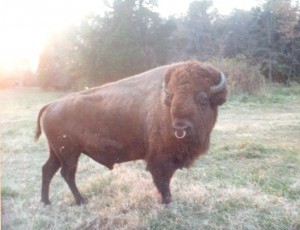Native American Heritage Month Observed with Local Lecture
What started at the turn of the century as an effort to gain a day of recognition for the contributions made by the first Americans to this country and its growth has resulted in a whole month being designated for that purpose. The Library of Congress, National Archives and Records Administration, National Endowment for the Humanities, National Gallery of Art, National Park Service, Smithsonian Institution and U.S. Holocaust Memorial Museum all pay tribute to the rich ancestry and traditions of the Native Americans. Dr. Arthur Parker, a Seneca Indian, persuaded the Boy Scouts of America to set aside a day for the first Americans. In 1915 the plan was formally approved but there is no record of the day being proclaimed. But in 1990 President George H. W. Bush approved a joint resolution making November Native American Heritage Month.
In keeping with this tradition, on Nov. 15 the Fairfield Chapter of the S.C. Genealogical Society presented a program with Mr. Val Green. The program was held at the Christ Central Community Center in Winnsboro, where Green presented a slideshow and spoke of the many changes that have taken place over the years and the ways of the early Americans who lived in this area.
“Many of the arrowheads found here,” Green said, “are not from the bow-and-arrow that came along much later, but rather from the throwing-stick. When the throwing-stick pierced the deer, it did not always die right away and often had to be tracked for several days before it could be found and brought home.”
Fairfield County many years ago was not wall-to-wall pine trees but was more a grazing land. Green got it in his mind that he wanted buffalo, so he bought two from a man in Charleston and began raising them. His main herd buffalo was named Bill Buffalo.
When Green is not researching and studying Southern history he is farming at his home at Salem Crossroads. He lives on land that has been in his family for generations and learned his heritage from his maternal grandmother through her family ancestry. He has researched his lineage to a great grandmother, five times removed, who was of the Catawba Indians. Deerskin trading was a well-known practice of those times and Green has documented two of his ancestors back to this trade in the Carolinas. Over the years Green has studied the deerskin trading figures and the trading posts and routes back to 1716. Much of his research has taken him back to the study of the Mississippian people and the Conquistador Hernando de Soto, in his search for gold in 1540.
Twenty-five people attended this presentation and all went to lunch at The Barn afterwards where the discussion of the Indian way of life continued. Green has been active in SCETV and UNCTV film projects about Indian culture. If you missed this wonderful presentation hosted by the S.C. Genealogical Society, watch for Mr. Green to return with a future program in which he will introduce practical approaches to researching native ancestry.












